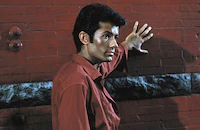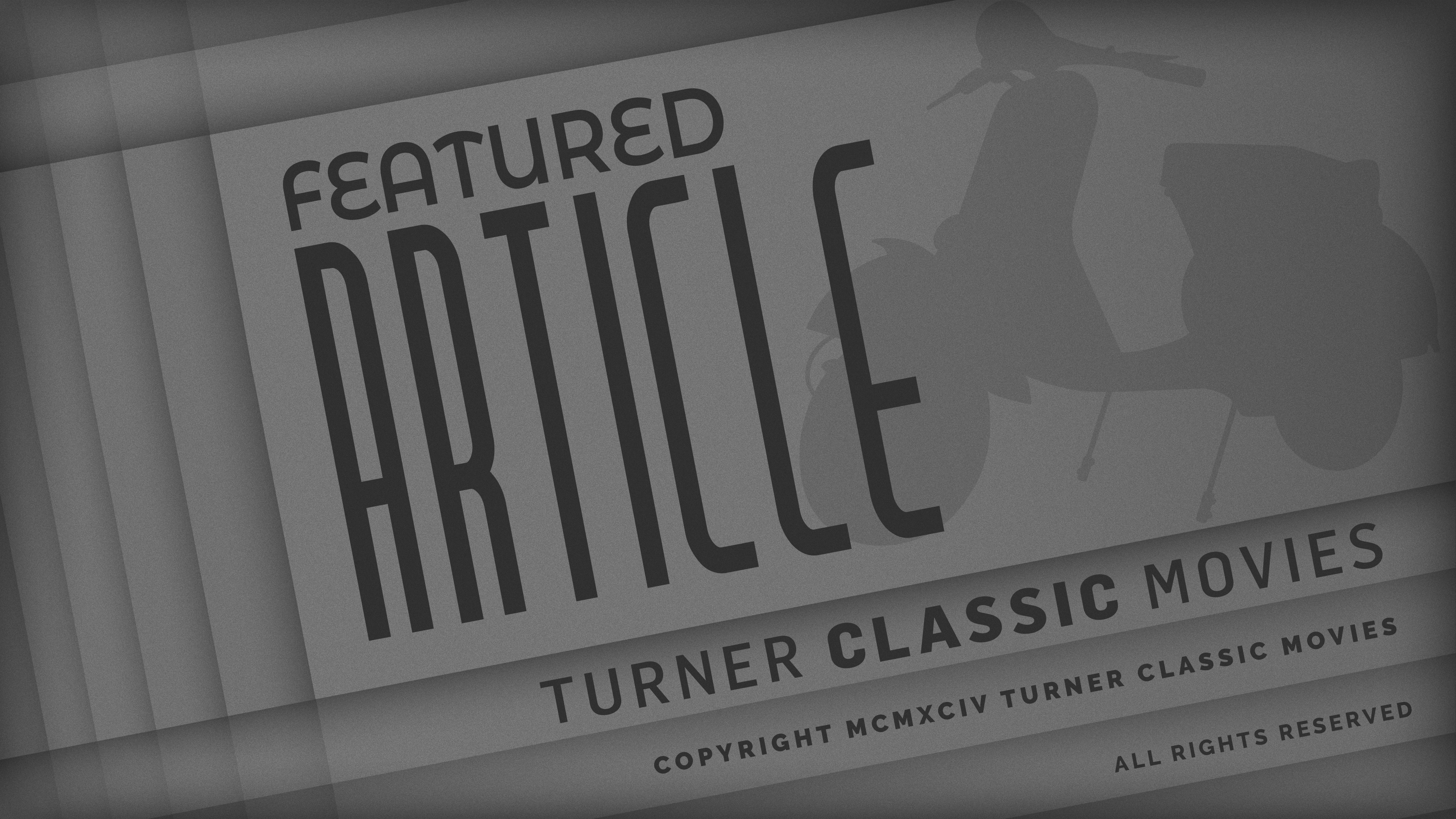633 Squadron

Brief Synopsis
Cast & Crew
Walter Grauman
Cliff Robertson
George Chakiris
Maria Perschy
Harry Andrews
Donald Houston
Film Details
Technical Specs

Synopsis
During World War II, Norwegian underground leader Erik Bergman informs the British of the location of a German V2 fuel manufacturing plant. Situated beneath an overhanging cliff at the end of an easily defended fjord, the factory can be destroyed only by collapsing the cliff on top of it, using light Mosquito aircraft. Wing Comdr. Roy Grant's 633 squadron is assigned the task, and Bergman plans a ground attack to coincide with the air strike, but he is captured and tortured by the Gestapo. Gestapo headquarters is destroyed by the 633 squadron, and Bergman is killed, but not before he reveals the plans for the attack. Underground resistance is destroyed, and Mosquito pilots, unaware that the ground attack will not take place, fly to the factory, and the entire squadron is wiped out. However, the last bomb dropped makes the mission a success. Only Grant and his navigator survive.

Director
Walter Grauman
Cast

Cliff Robertson

George Chakiris
Maria Perschy

Harry Andrews
Donald Houston

Michael Goodliffe

John Meillon
John Bonney

Angus Lennie
Scot Finch
Barbara Archer
Julian Sherrier
Suzan Farmer
John Church
Jeremy Wagg
Johnny Briggs
Sean Kelly
Edward Brayshaw
Arnold Locke
Peter Kriss
Geoffrey Frederick
Richard Shaw
Anne Ridler
Cavan Malone
Drewe Henley
John Dray
Chris Williams
Crew
Bert Bates
Albert Becket
John Bramall
James Clavell
John Crewdson
Cecil F. Ford
Ron Goodwin
Tom Howard
Howard Koch
Hamish, (group Capt.) Mahaddie
Lewis J. Rachmil
Edward Scaife
J. B. Smith
Roy Stevens
Michael Stringer
Ted Sturgis
A. W. Watkins
John Wilcox

Film Details
Technical Specs

Articles
633 Squadron
One of the big selling points of this picture was its use of actual de Havilland Mosquito fighter-bombers, the so-called "Wooden Wonders" of World War II since they were constructed almost entirely of wood. By 1963, when planning for the film got underway, there were very few of these planes left, and those still around were quite literally about to be sent to the scrap heap. Producer Walter Mirisch later recalled that if he had approached the British Air Ministry just two weeks later than he did, most of the planes would already have been dismantled. As it worked out, twelve Mosquitos were able to be used for the movie -- three that could fly, and nine more to be shown on the ground. According to the film's publicity notes at the time, there was no known previous footage of Mosquitos in flight, so the film took on historical significance. Mirisch additionally rented three German Messerschmitt fighter planes for use in the film, as well as an old Boeing B-25 as a camera plane.
Cliff Robertson, fresh off a role in The Best Man (1964) and a portrayal of John F. Kennedy in PT 109 (1963), landed the lead role, and the fine Shakespearean British actor Harry Andrews took the role of the Air Vice Marshall who gives Robertson his assignment. This was one of many military characters in Andrews's screen career, with perhaps his finest to come one year later in The Hill (1965), for which he would receive a BAFTA award. And as Mirisch later wrote in his memoir (I Thought We Were Making Movies, Not History), "There was a character role in it that fit George Chakiris -- with whom we still had options dating back to West Side Story (1961) -- and we considered having him in the film would be valuable."
Director Walter Grauman worked primarily in television but had just directed the feature film Lady in a Cage (1964). He was an old college friend of Mirisch's and had been a bomber pilot himself during World War II. The screenplay, adapted from a novel, was by James Clavell, who had previously written The Fly (1958) and The Great Escape (1963) and would go on to write and direct To Sir, With Love (1967). His own first novel, King Rat, would become a movie in 1965, and Clavell eventually went on to work as a novelist full-time, with Shogun his most famous.
Just before production, Cliff Robertson told Walter Mirisch that he had second thoughts about the script and desired some changes. Mirisch promised that if Robertson would start production as planned, Mirisch would find another writer. The producer was already in London at this point, and he discovered that Howard Koch, one of the screenwriters of Casablanca (1942), was living in London as well, having been blacklisted during the Hollywood witch hunt and forced to find work in England. Mirisch hired him to do a rewrite, and the production continued without any delays.
Filming took place on soundstages at MGM's British studios, at a former RAF base in Bovingdon, England, and in the skies over Scotland, including areas over the Isle of Sky, Loch Ness, and Dalcross. (In the film, the characters train for their mission in Scotland since the topography is similar to that of Norway.) The picture had a $1.3 million budget and became a box office hit, especially in Britain. Reviews were fairly positive, with The Hollywood Reporter praising the "exciting action sequences" and Variety deeming it "a spectacular achievement... Contains some of the most rip-roaring aerial action photography ever recorded on celluloid." The review added, however, that the action was "not matched by the drama it adorns."
633 Squadron made a big impression on George Lucas, who was about 20 when it was released. In Lucas's Star Wars (1977), the final attack through a "trench" on the Death Star was patterned in part on the climactic scene in this film. There are even bits of dialogue here that are very similar to lines heard in the Star Wars scene. (Another influence on Lucas's sequence was the 1955 British war film The Dam Busters.)
The film's success prompted Mirisch to produce several more war movies distributed by United Artists, among them Attack on the Iron Coast (1968), Submarine X-1 (1968), Mosquito Squadron (1969), and Hell Boats (1970). Like 633 Squadron, they were made in England and starred American actors in the lead.
By Jeremy Arnold

633 Squadron
Quotes
Then what's it all add up to? All their sacrifice?- Squadron Leader Adams
A successful operation.- Air Vice Marshal Davis
But they're probably all dead. All 633 Squadron!- Squadron Leader Adams
You can't kill a squadron.- Air Vice Marshal Davis
Trivia
Three of the De Havilland Mosquitos seen in this film were airworthy and two could taxi on the ground. The latter two were deliberately destroyed in crash scenes. One of the crashes was filmed from two angles and used for separate scenes.
The German "fighters" were actually 4-seat Messerschmitt 108 "Taifuns," painted to look like Me-109 fighters.
Cliff Robertson, an accomplished pilot, bought a Mosquito after filming had finished, as he was so impressed with it. He also owned a Spitfire at one point.
Most of the attack on the Fjord at the end of the film was done with 1/48th scale Mosquito models.
The three airworthy Mosquitos used in the film were actually photo-recon versions that had to be adapted into fighter-bomber versions for filming. You can tell as the fighter-bomber had a flat windscreen and the photo-recon had a separated windscreen, as seen in the film.
Notes
Copyright length: 94 min. Released in Great Britain in 1964. Filmed in England, with exteriors shot on west coast of Scotland.

Miscellaneous Notes
Released in United States Summer June 1964
Released in United States Summer June 1964














